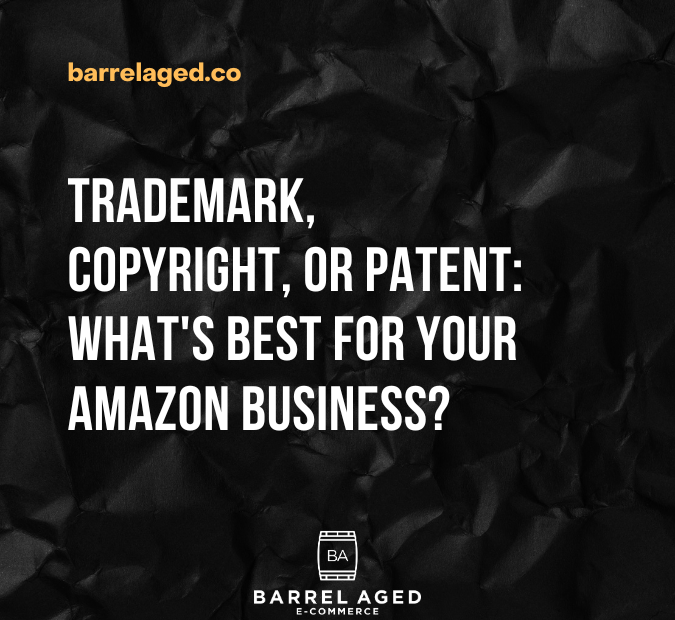Deciding whether to trademark, copyright, or patent your Amazon product listings depends on your business goals and the uniqueness of your products and content. Trademarks help protect your brand, copyright safeguards your original content, and patents protect your inventions.
Trademark, Copyright, and Patent: What’s the Difference?
- Trademark
- What is it? A trademark protects brand names, logos, and slogans. It’s a way to identify and distinguish your products from others.
- Why consider it? If you have a unique brand name or logo, a trademark can help protect it from being used by other sellers. This helps maintain your brand’s identity and reputation.
- How to get it? You need to apply for a trademark through the United States Patent and Trademark Office (USPTO).
- Copyright
- What is it? Copyright protects original works of authorship like text, images, and videos. It applies to the content you create for your listings.
- Why consider it? If you’ve created unique content for your product listings, such as descriptions, photos, or videos, copyright can help prevent others from copying and using your content without permission.
- How to get it? Copyright is automatically granted when you create original content, but you can register it with the U.S. Copyright Office for additional protection.
- Patent
- What is it? A patent protects new inventions or discoveries. It’s a way to secure exclusive rights to a product or process you have invented.
- Why consider it? If you have created a new and unique product, a patent can protect it from being made, used, or sold by others without your permission.
- How to get it? You need to apply for a patent through the USPTO. There are different types of patents, like utility patents for new inventions and design patents for new designs.
Why Should You Consider These Protections?
- Trademark: If you want to build a strong, recognizable brand on Amazon, a trademark can protect your brand name and logo from being copied. This helps you stand out in a crowded marketplace and builds trust with your customers.
- Copyright: If you’ve invested time and effort into creating unique product descriptions, photos, or videos, copyright protects your content. This means others can’t use your hard work without your permission, helping you maintain a unique and appealing product listing.
- Patent: If your product is a new invention or has a unique design, a patent ensures that competitors can’t legally make or sell the same product. This gives you a competitive edge and can be a major selling point for your customers.
When Might You Not Need These Protections?
- Trademark: If you’re selling generic products or using generic brand names, a trademark might not be necessary. However, if you plan to grow your brand, consider trademarking as you expand.
- Copyright: If your listings use basic descriptions or stock photos, you might not need copyright protection. But unique, high-quality content can benefit from copyright to prevent others from copying your work.
- Patent: If you’re selling common or already existing products, a patent might not be relevant. Patents are best for truly unique inventions or designs that offer something new to the market.
Remember, taking these steps can help protect your hard work and give you a competitive advantage in the busy world of Amazon selling. Whether you’re just starting or looking to expand, consider how these protections can benefit your business.
Questions? Reach Out!
If you have any questions, please feel free to contact us.
